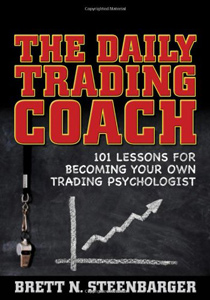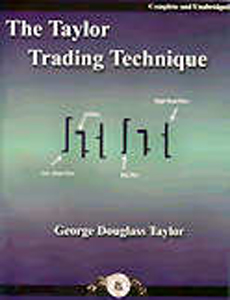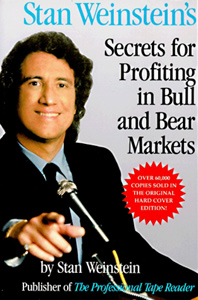Price-to-Book Ratio (P/B Ratio)
Further Reading
The Price-to-Book Ratio or P/B Ratio is determined by dividing the current closing price of a stock by the book value per share of the latest quarter. P/B Ratio is termed as price-equity ratio too.
Interpreting the Price-to-Book Ratio
If you are willing to evaluate whether the price of a particular company’s share is justified or not then P/B Ratio is something that can help you out with that. The premium that the market is willing to pay for a certain company -above the firm’s book value- depends on the ratio. Higher the ratio is more the market will be interested to pay. On the other hand, the company will be seen as the one with insignificant value or its shares are being undervalued if the calculation shows a low ratio.
A company with a P/B ratio of less than one theoretically means the value of the assets of the liquidated firm is more than for what its shares are being traded. In such cases that particular firm will have more value as a dead one rather than remaining alive.
Profiting on Low Ratio
There are some investors out there who prefer to invest on the stocks with low P/B believing that such stocks have good chance to gain in the coming days. Benjamin Graham was one such investor. Occasionally you will find some companies getting unjustly hammered by the market and their share value goes down to the bottom of their price chart for a certain period of time. Investing on those stocks in times like this can turn out to be quite profitable in the long run. You can go for the P/B Ratio to identify such undervalued stocks in the market in order to implement this strategy.
Sensing Troubles
However, it is important for the investors to keep in mind that a low P/B value of a company share does not always means that those shares are being undervalued. In times you may find some stocks with low P/B Ratio simply because maybe something is seriously wrong with that firm fundamentally. Therefore it is recommended that you deal with such stocks very carefully.
Limitations of P/B Ratio
One of the main limitations of the Price-to-Book Ratio is that the book value metric is not flawless. It is very much possible for a trader to fall into traps. You may face difficulties with book value when it comes to determining a reliable figure for all the assets on the balance sheet. Confusion can arise easily when you are trying to find the value of a factory that is more than 40 years old or has dozens of computers available for about a decade.
If you take a look at the book value, you will find the amount a firm originally spent for the assets minus depreciation. Assets that are kept in the book for a long period of time can have “zero” value through depreciation. Confusion may arise regarding the original value of some assets that are relatively new too considering the fact that they can come up with lower value in the market than the value that was recorded against them in the book. Things like these can skew the book value significantly.
In addition to this, if you analyse the stocks based on few tangible assets like the software or financial service based firms then the Price-to-Book Ratio won’t look as handy as it was thought to be. This happens mainly because of the fact that the intangible assets of a company (the assets that cannot be touched or seen) like brand name, patents or goodwill are not recorded in the book vale of a firm. This is why the share price of such companies with more intangible assets does not have much relation with the book value.
It won’t be wise to rely on the book value for sniffing out firms that are carrying a significant amount of debt. If you consider the equation (Book Value = Tangible Assets – Liabilities) it will reveal the fact that a firm with a significantly high amount of liability will come up with stocks with lower Book Value which occasionally can be even negative and the Price-to-Book Ratio will be artificially high when the book value is low.
Advantages of Using thePrice-to-Book Ratio
However, the biggest advantage of using the P/B Ratio is that it involves simple valuation process which can be used for analysis. A trader can identify the real bargains in the market before others by using a combination of tools like high returns on equity (ROE) and book value analysis. So as long as you know how to use the Price-to-Book Ratio strategically, you will be able to make the best out of it without getting effected by its limitations.
Glossary List- How to Trade Forex and Gold Options
- How to Trade the Gold Price and Profit!
- Forex Trading the EUR/USD Pair € EURO and $ US Dollar
- How to Trade Stock Market Indices S&P500
- How to Trade Crude Oil
- Forex Trading Psychology
- What Are Broker Recommendations?
- Free Tickets to Trading & Investing Seminar & Expo ($18) Brisbane 2013
- Stock Calc App
- All About Warrants
- Introduction to Exchange Traded Funds
- Introduction to Exchange Traded Funds: Features
- Introduction to Exchange Traded Funds: Domestic ETFs
- Introduction to Exchange Traded Funds: International ETFs
- Exchange Traded Commodities
- Australian Stock Scan
- Australian Online Share Trading
- List of Trading Books
- Interesting Thoughts about the Australian Dollar
- What's the Meaning of Hawkish?
- Do You Know How To Use the P/E Ratio
- Trading, Religion and Politics - Do They Have Anything in Common?
- Shares that are Volatile that Double and Half in the Short Term
- Telstra (TLS) T3
- Margin Call by E-mail
- The Cost of Holding a Position
- Lack of Disclosure: Compensation from ASX Listed Company
- Unrealistic Returns and Benchmarks
- CMC Markets Down
- Quality versus Quantity Forex Trading
- Woolworths 1H Sales $30.7bn up 3.2%
Date added 31-01-2013 - ASIC Fines CommBank's CommSec
Date added 25-09-2012 - Industry Super Network Calls to Ban High Frequency Trading (HFT)
Date added 22-09-2012 - NAB Launches Online Share Trading Platform
Date added 19-09-2012 - Reserve Bank of Australia Says 23 Countries Holding AUD
Date added 18-09-2012 - Australia Post Digital Mailbox
Date added 10-09-2012 - Winners and Losers of Trading for Week 2
Date added 16-01-2012 - 2012's First Week of the Best and Worst Traded Stocks
Date added 09-01-2012 - 2011's Last Best and Worst Traded Stocks
Date added 05-01-2012 - Best and Worst Pre-Christmas Traded Stocks
Date added 30-12-2011 - Trading Winners and Losers for Dec. 12-16
Date added 19-12-2011 - Best and Worst Traded Stocks for Dec. 5-9
Date added 13-12-2011 - Top 3 Best and Worst Traded Stocks
Date added 05-12-2011 - ASX Glitch Trading Halt
Date added 27-10-2011 - Worst Trade Stocks (and the Best)
Date added 06-08-2011
Top 150 Public Companies Listed on the Australian Stockmarket as at 29/05/2009
- BHP Billiton
- Westpac Banking Corporation (WBC)
- Commonwealth Bank of Australia (CBA)
- National Australia Bank (NAB)
- Telstra (TLS)
- ANZ
- News Corporation (NWS)
- Woolworths Limited(WOW)
- Woodside Petroleum Limited (WPL)
- Rio Tinto
- Westfield Group (WDC)
- Westfarmers Limited (WES)
- QBE Insurance
- CSL
- Newcrest Mining Limited (NCM)
- Origin Energy Limited (ORG)
- Santos Limited (STO)
- AMP Limited (AMP)
- Macquarie Group (MQG)
- Foster’s Group Limited (FGL)




